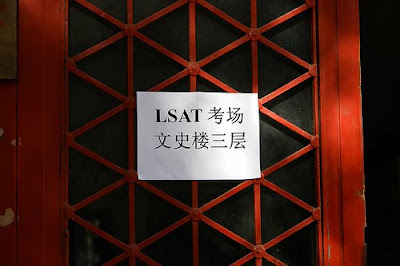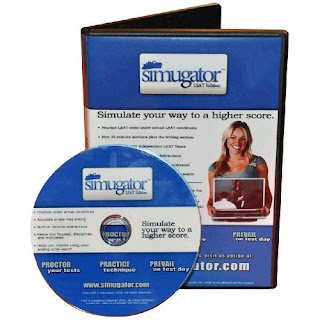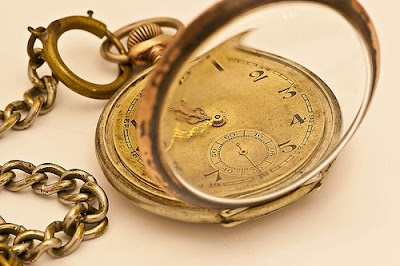, I found only 9 instances in modern LSAT history (June 1991-December 2009) where the same answer choice appeared 4 times in a row.
2 of these instances occurred in the same LSAT section.
Now, you might have thought LSAC artificially increases the number of 4-in-a-rows to throw test-takers off - to make them second-guess themselves. However, it appears that LSAC artificially
the number of 4-in-a-rows. (I've explained the math supporting this below.)
1. To remind you that it's possible to have 4 of the same answer choice in a row - even for it to happen more than once in the same section.
2. To tell you that if you have 3 of the same answer choice in a row and have to randomly guess on the next question, you may want to consider guessing something other than that letter simply because LSAC appears to purposely avoid 4-in-a-row.
Of course, focus on the content of the exam above all else. Patterns and probabilities should always come second to content. However, it's still useful to be aware of them for random guessing purposes.
Note: Since the cat's now out of the bag, it's possible that LSAC may change its strategy. Don't blame me if your exam's answer key has a 4 in a row or two, but if the
64 released PrepTests are any indication, there probably won't be a single 4-in-a-row.
Cases of same letter 4-in-a-row:PrepTest 8 (June 1993), LR1, Q4-7 - answer C
PrepTest 12 (October 1994), LR1, Q11-14- answer D
PrepTest 14 (February 1995), LG, Q13-16 - answer D
PrepTest 19 (June 1996), LR2, Q18-21 - answer C
PrepTest 22 (June 1997), LG, Q6-9 - answer BPrepTest 22 (June 1997), LG, Q20-23 - answer EPrepTest 24 (December 1997), LG, Q18-21 - answer E
PrepTest 36 (December 01), LR2, Q18-21 - answer B
PrepTest 45 (December 04), LG, Q7-10 - answer A
If anyone's interested in the math behind all this:Actual occurrences where a section contained at least one sequence of 4 in a row in the 64 released LSATs = 8
Chances of (at least) one 4-in-a-row in any particular section = ~16.2%
# of sections one would expect to contain (at least) one 4-in-a-row in the 64 released LSATs = 41.472
(4 sections per exam * 64 exams) * 16.2% = 256 * 16.2% = 41.472, which is over 5 times the actual number of occurrences.The odds of finding 4 questions in a row with the same answer is (1/5)^3
This is because, given some answer for a question, the odds that the next question will have that same answer is 1/5. Then the odds that the 3rd question will also have that answer is 1/5 and finally the odds that the 4th question will too have the same answer is also 1/5. By multiplying, you find that for a set of 4 questions each with 5 possible answers, the odds of them having the same answer is 1/5 * 1/5 * 1/5 = (1/5)^3
Statistically, 1 out of every 125 sets of 4 questions (if the answers were truly random) would have 4-in-a-row of the same answer choice.
Thus, the odds of a set of 4 questions NOT having the same answers is: 124/125
Because there are 22 sets of 4 questions in an LSAT section (questions 1-4, 2-5, 3-6…22-25), we calculate the odds that for all of those sets of 4 questions, no set share the same answers: (124/125)^22 = 83.802464%
This means that the odds of at least one of those sets of 4 questions having all the same answer is 1-.83802464 = 16.197536%
There have been 256 individual sections of the modern LSAT given. In theory, approximately 16.2% of those sections should have contained at least one string of 4 questions with the same answers. 256 * .162 = 41.472, we’ll round that down to 41 sections that should have contained a string of at least 4 questions with the same answers (statistically speaking of course).
(I said above that there are 22 sets of 4 questions in an LSAT section because there are 22 possible sequences of 4 in a section of 25 questions. Sure, there are many sections that have a greater or lesser number of questions per section, but let's assume those differences cancel each other out.)
Bottom line: There appears to be a conspiracy to decrease the number of 4-in-a-rows.
***
Discussion of the two 4-in-a-rows in PrepTest 22's Logic Games section:If you've done a few Logic Games, you may have noticed that LSAC often presents the content of answer choices in either alphabetical or numerical order.
I find it curious that in PT22, LG, Q20, the answer choices are presented in reverse alphabetical order, leading to a 4-in-a-row sequence of Es.
Call me crazy, but I'm entertaining the possibility that this exception to the traditional alphabetical presentation of choices was intentional in order to create 2 sequences of 4-in-a-row in the same section.
There have been 256 LSAT sections, so it's not
that unlikely that we'd see a case of 2 4-in-a-row sequences in the same section by now. However, given the sketchiness of the reverse alphabetical ordering in PT22, LG, Q20, I'm calling foul play.
***
Cases where girls named Becca were likely to freak out:
PrepTest 16 (September 1995), LR2, Q13-17 - BECCA
PrepTest 44 (October 2004), LR1, Q1-5 - BECCA
PrepTest 57 (June 2009), RC, Q12-16 - BECCA
Actual occurrences where a section contained at least one sequence of BECCA in the 64 released LSATs = 3
Chances of at least one BECCA in any particular section = .67%
# of sections one would expect to contain (at least) one BECCA in the 64 released LSATs = 1.7152
(4 sections per exam * 64 exams) * .67% = 256 * .67% = 1.7152, which is pretty close to the number of actual occurrencesThe odds of finding a particular 5-letter sequence is (1/5) ^ 5 = 1/3125
Statistically, 1 out of every 3125 sets of 5 questions (if the answers were truly random) would have a particular 5-letter sequence.
Thus, the odds of a set of 5 questions NOT containing a particular sequence is: 3124/3125
Because there are 21 sets of 5 questions in an LSAT section (questions 1-4, 2-5, 3-6…22-25), we calculate the odds that for all of those sets of 5 questions, no set contains a particular 5-letter sequence: (3124/3125)^21 = 99.330146%
This means that the odds of at least one of those sets of 4 questions having all the same answer is 1-.99330146 = .669854%
There have been 256 individual sections of the modern LSAT given. In theory, approximately .67% of those sections should have contained at least one particular 5-letter sequence the same answers. 256 * .67% = 1.7152, we’ll round that up to 2 instances where sections that statistically should have contained a string of at least one instance of BECCA.
(I multiply by 21 because there are 21 possible sequences of 5 in a section of 25 questions. Sure, there are many sections that have a greater or lesser number of questions per section, but let's assume those differences cancel each other out.)
# of sections containing (at least) one particular 5-in-a-row sequence one would expect over the course of 64 LSATs = (4 sections per exam * 64 exams) * .67% = 256 * .67% = 1.7152. Round that to the nearest whole number, and we get 2, which is 1 fewer than the actual number of occurrences. Nothing shocking or scary about that.
***
Bottom line: If the answer choices spell your name, don't freak out. If the answer choices spell the word "DEAD," don't freak out. This sort of thing can, and does, happen.
Photo by unloveable / CC BY-NC-SA 2.0 Many of you took the June 2010 LSAT earlier this week. Hope it went well!
Many of you took the June 2010 LSAT earlier this week. Hope it went well!





















